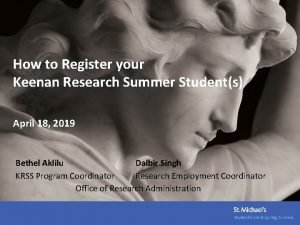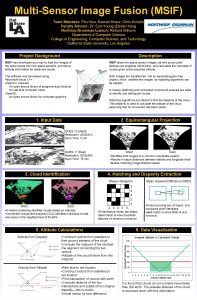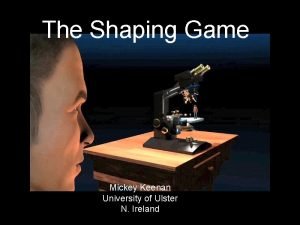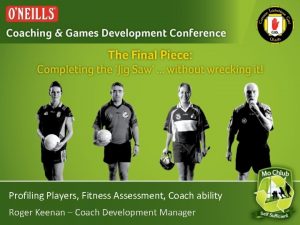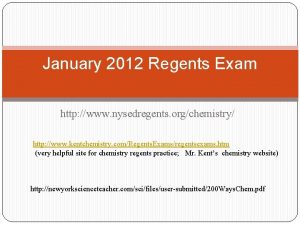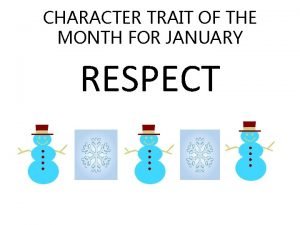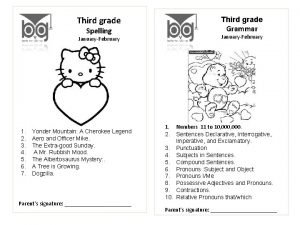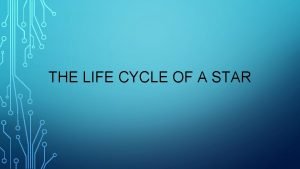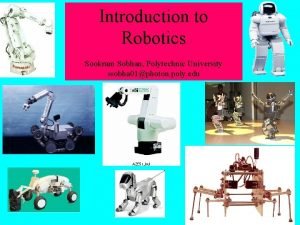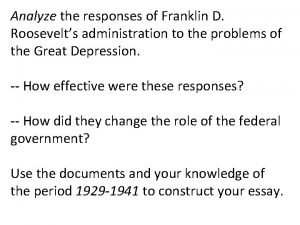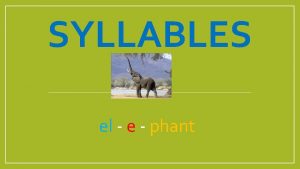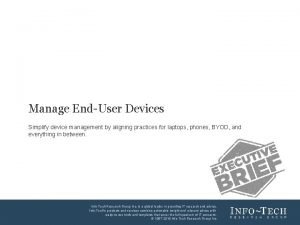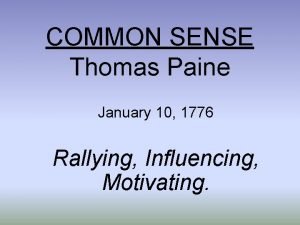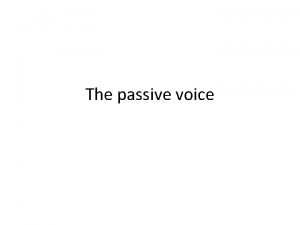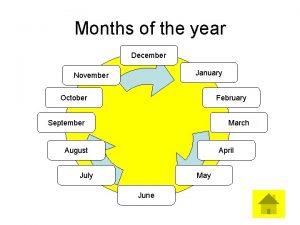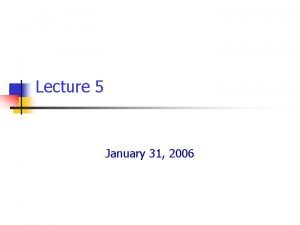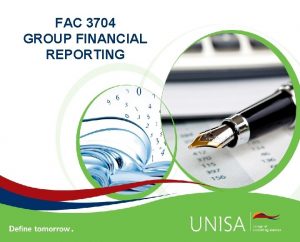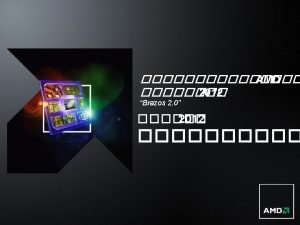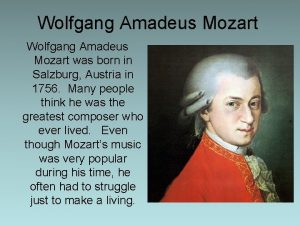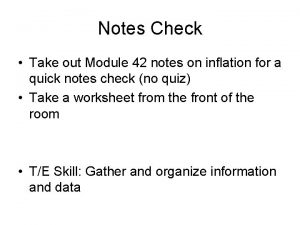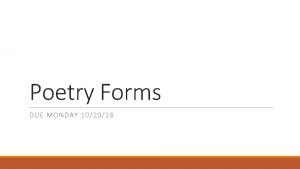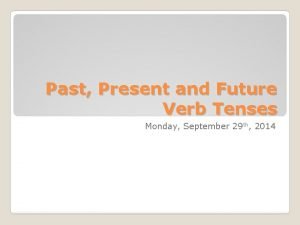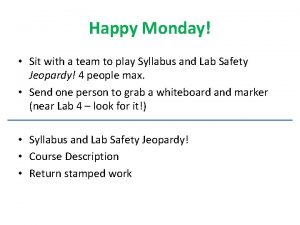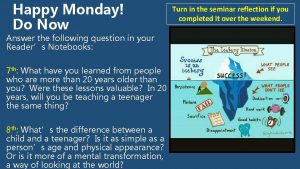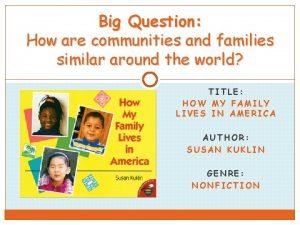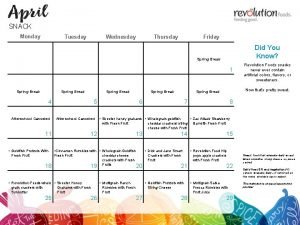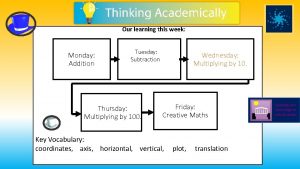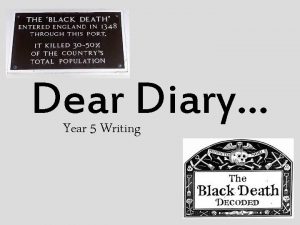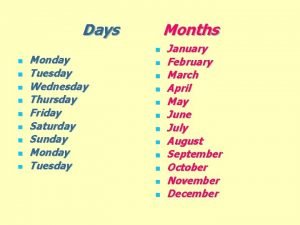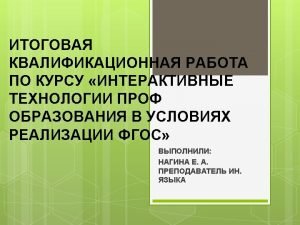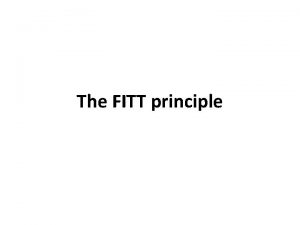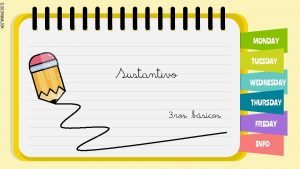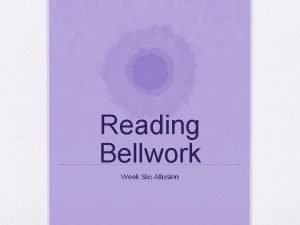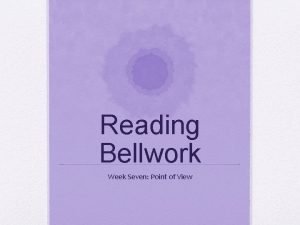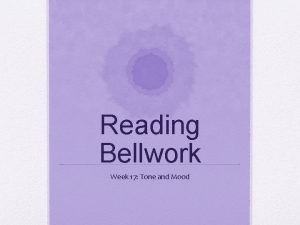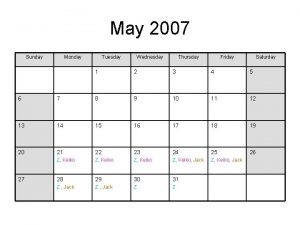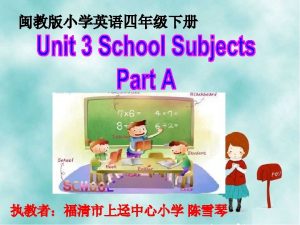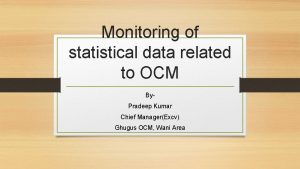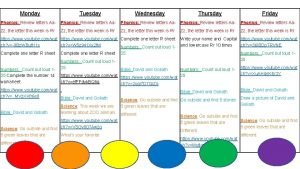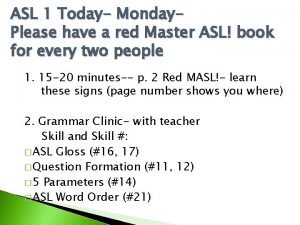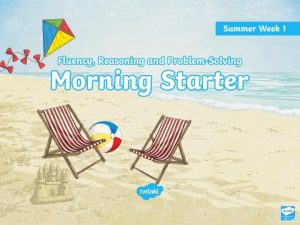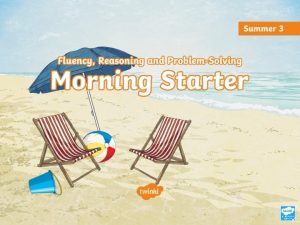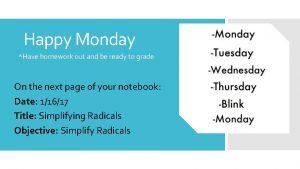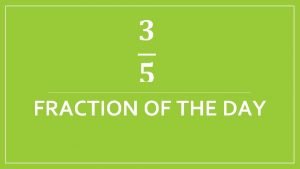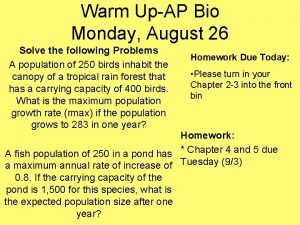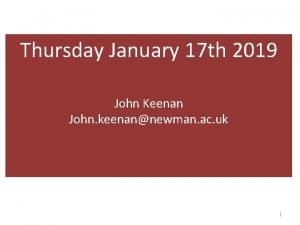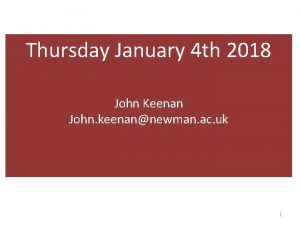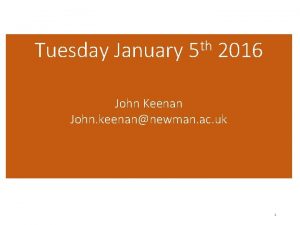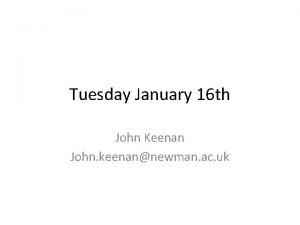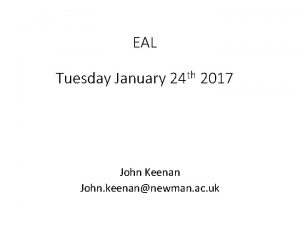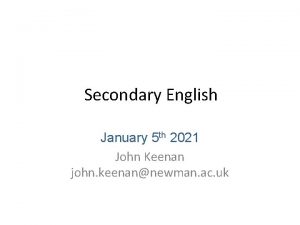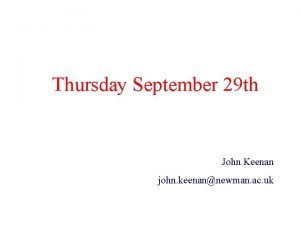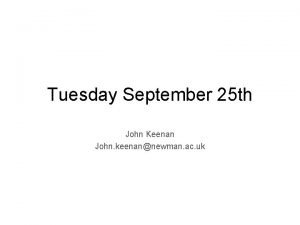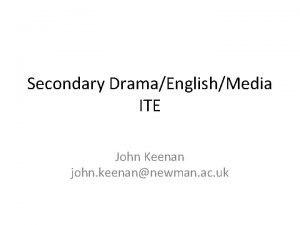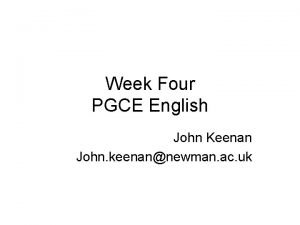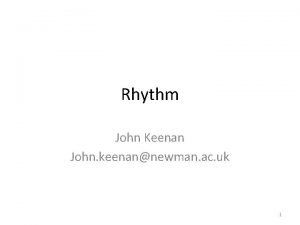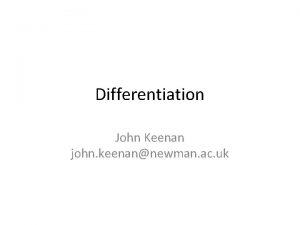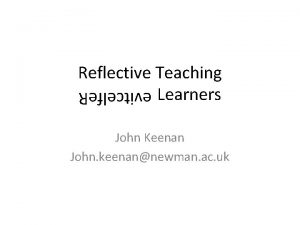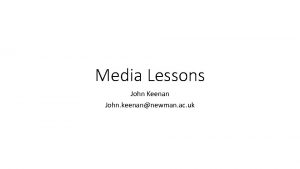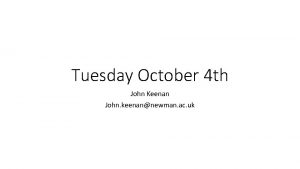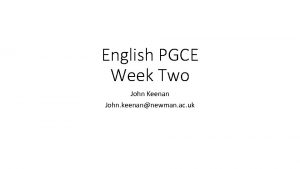Monday January 7 th 2019 John Keenan John







































































































































- Slides: 135

Monday January 7 th 2019 John Keenan John. keenan@newman. ac. uk 1

Happy New Year 2

Happy New Year • What do you need? buy it.

What are you doing? • PGCE • QTS

QTS Teach Pass observations at Emerging + Evidence against the QT Standards - Mahara Teacher File

PGCE Attend Pass two assignments at Level 6 or Level 7 1. Evidence-based 2. Professional

How are you doing? Mahara - QTS

How are you doing? PGCE Grade – essays

How are you doing? Pen Portraits and References

How are you doing? Teaching Practice and Observations

How are you doing? ’good’ ‘outstanding’ Teacher as all-knowing oracle. Teacher as organiser, and but one source of information. Learning is teacher-centred, didactic, with carefully-guided activities to support learning. Learning processes are student-centred and involve group and individual activities. Teacher generated questions are used Students construct their own learning to elicit understanding. questions. Students are co-designers of the learning Lesson-design rests with the teacher episode and the attendant success and correct conclusions mark success. criteria.

’good’ ‘outstanding’ Learning consists of stimulus – response relationship, and is passive Learning is an active process. in nature. Learning involves ‘filling empty vessels’ and ensuring retention. Learning is a process of ‘fire-lighting’ and connection- and sense-making. Effective learning stems from efficient transfers of information. Effective learning arises from openended, challenging problem-solving exercises. Intelligence is fixed. Intelligence is created.

How are you doing? 13

A new year’s personal resolution A new year’s professional resolution 14

One thing you are good at One thing you are not so good at 15

You’re good at A. . but not so good at B So let’s work on B

You’re good at A. . but not so good at B So let’s work on A

Ways forward • Deficit repair model – fixes weaknesses • Appreciative model – builds on strengths Engaging students and staff with educational development through Appreciative Inquiry, Innovations in Education and Teaching International. DOI: 10. 1080/14703297. 2013. 796719 (Online).

End-point review form – new foci 19

S 1 Set high expectations which inspire, motivate and challenge pupils establish a safe and stimulating environment for pupils, rooted in mutual respect set goals that stretch and challenge pupils of all backgrounds, abilities and dispositions demonstrate consistently the positive attitudes, values and behaviour which are expected of pupils S 3: Demonstrate good subject and curriculum knowledge have a secure knowledge of the relevant subject(s) and curriculum areas, foster and maintain pupils’ interest in the subject, and address misunderstandings demonstrate a critical understanding of developments in the subject and curriculum areas, and promote the value of scholarship demonstrate an understanding of and take responsibility for promoting high standards of literacy, articulacy and the correct use of standard English, whatever the teacher’s specialist subject if teaching early reading, demonstrate a clear understanding of systematic synthetic phonics if teaching early mathematics, demonstrate a clear understanding of appropriate teaching strategies S 4 Plan and teach well-structured lessons impart knowledge and develop understanding through effective use of lesson time promote a love of learning and children’s intellectual curiosity set homework and plan other out-of-class activities to consolidate and extend the knowledge and understanding pupils have acquired reflect systematically on the effectiveness of lessons and approaches to teaching contribute to the design and provision of an engaging curriculum within the relevant subject area(s) S 7 Manage behaviour effectively to ensure a good and safe learning environment have clear rules and routines for behaviour in classrooms, and take responsibility for promoting good and courteous behaviour both in classrooms and around the school, in accordance with the school’s behaviour policy have high expectations of behaviour, and establish a framework for discipline with a range of strategies, using praise, sanctions and rewards consistently and fairly manage classes effectively, using approaches which are appropriate to pupils’ needs in order to involve and motivate them maintain good relationships with pupils, exercise appropriate authority, and act decisively when necessary. 20

Personal Targets from End-point Review • Standard 1 • Standard 3 • Standard 4 • Standard 7 21

S 2: Promote good progress and outcomes by pupils be accountable for pupils’ attainment, progress and outcomes plan teaching to build on pupils’ capabilities and prior knowledge guide pupils to reflect on the progress they have made and their emerging needs demonstrate knowledge and understanding of how pupils learn and how this impacts on teaching encourage pupils to take a responsible and conscientious attitude to their own work and study. S 5 Adapt teaching to respond to the strengths and needs of all pupils know when and how to differentiate appropriately, using approaches which enable pupils to be taught effectively have a secure understanding of how a range of factors can inhibit pupils’ ability to learn, and how best to overcome these demonstrate an awareness of the physical, social and intellectual development of children, and know how to adapt teaching to support pupils’ education at different stages of development have a clear understanding of the needs of all pupils, including those with special educational needs; those of high ability; those with English as an additional language; those with disabilities; and be able to use and evaluate distinctive teaching approaches to engage and support them. S 6 Make accurate and productive use of assessment know and understand how to assess the relevant subject and curriculum areas, including statutory assessment requirements make use of formative and summative assessment to secure pupils’ progress use relevant data to monitor progress, set targets, and plan subsequent lessons give pupils regular feedback, both orally and through accurate marking, and encourage pupils to respond to the feedback S 8 Fulfil wider professional responsibilities make a positive contribution to the wider life and ethos of the school develop effective professional relationships with colleagues, knowing how and when to draw on advice and specialist support deploy support staff effectively take responsibility for improving teaching through appropriate professional development, responding to advice and feedback from colleagues communicate effectively with parents with regard to pupils’ achievements and well-being 22

How are you doing? Get a job. https: //www. theguardian. com/teachernetwork/teacher-blog/2014/jan/29/teacherjob-interview-questions-top-ten

The Practice Lesson 1 introducing (structuring) topics or activities clearly 2 explaining clearly with examples and illustrative materials 3 systematic and business-like organisation of lessons 4 variety of teaching materials and methods 5 use of questions, especially higher-order questions 6 use of praise and other reinforcement (verbal and nonverbal) 7 encouraging learner participation 8 making use of learners' ideas, clarifying and developing them further 9 warmth, rapport and enthusiasm, mainly shown nonverbally Rosenshine (1971)

• Critically analyse literature around the many Englishes which exist including dialects. Explore pedagogical views on Standard English. • Examine reasons for studying literature including the sociological, psychological, aesthetic and cultural approaches. • Consider why texts gain a position in the Classical Canon and political stances to teaching it. • Examine through a review of literature, the nature of dyslexia, autism, ADHD and other learning disabilities and how they affect pupils’ language development. • Critique a range of pedagogies in order to explore the most apt for teaching English in schools.

Assignment Details: 4000 words A critical analysis of an evidence-based approach to teaching in English consisting of: A review of research literature on a problematic aspect of teaching and learning English that has been agreed with the module leader. A discussion of the potential implications of the reviewed literature for the effective teaching of a problematic part of the drama curriculum. Suggestions for how these implications might inform teaching of the chosen part of the curriculum.

29. 4. 19 https: //www. timeanddate. com/countdown/generic? iso=20230 429 T 12&p 0=297&msg=Assignment&font=cursive

wordsearch


https: //www. puzzle-maker. com/CW

Today… • Examine through a review of literature, the nature of dyslexia, autism, ADHD and other learning disabilities and how they affect pupils’ language development.

Problématisation • Problematisation does not mean the representation of a pre-existent object nor the creation through discourse of an object that did not exist. It is the ensemble of discursive and non-discursive practices that make something enter into the play of true and false and constitute it as an object of thought (Foucault, Dits et écrits IV, 1975, 670) To analyze problematizations is not to reveal a hidden and suppressed contradiction: it is to address that which has already become problematic. For a problematization to have formed, something prior “must have happened to have made it uncertain, to have made it lose its familiarity, or to have provoked a certain number of difficulties around it” (Rabinow and Rose, 2009, The Essential Foucault : Introduction, 14) •

Since the Special Educational Needs and Disability Act 2001 mainstream schools have been required to offer an inclusive education for students with special educational needs (SEN): ‘Schools… Should actively seek to remove the barriers to learning and participation they can hinder or exclude pupils with special educational needs’ (p. 2). This legislation is supported by both the Teaching Standards 2011 and the 2015 SEN Code of Practice. My approach when dealing with pupils with barriers to learning in my classroom is to treat every pupil as an individual with individual needs: in fact that is true for the non-SEN pupils too. To me, differentiation is about understanding how individual students learn and tailoring my teaching to facilitate that. My experience in both being dyslexic and working as a teaching assistant with dyslexic students for a number of years tells me that attempting to treat two dyslexic students the same simply because they’re both dyslexic does not work. This point is emphasised by Mortimore who a swelling from 11 to over 40 definitions of dyslexia in just a few years (citing Rice and Brooks, 2008, p. 50). With over 40 definitions of what dyslexia is, attempting to treat any two dyslexic pupils in the same way simply because they’re both dyslexic would be folly. I was not diagnosed with dyslexia until I got to university as a 19 -year-old. I went all the way through school and further education and achieved GCSEs and A-levels with an undiagnosed learning difficulty. I was able to do this because I developed coping strategies to help me overcome my difficulties. Once I was made aware of my unconscious actions I was able to identify a number of techniques I had used throughout my education. I am a strong believer that SEN pupils need to be able to develop these coping strategies while at school because once they leave education the inclusive and supportive nature of the school environment is no longer there: ‘In the 19 th [century], as the modern emphasis on qualification by examination came into being, the bad speller might find his livelihood threatened by his disability’ (Stirling quoting Scragg, 1993, p. 16). Students with barriers to learning have to work harder than those without simply to keep up. I often liken this to an athlete going to altitude training – it is more difficult in the moment but when facing a competitor who has not trained at altitude you have an advantage. Students need to develop their own coping strategies as this is what gives them strength, their motivation to do this comes from not wanting to appear weak or stupid in front of their peers: ‘Most children in school are at least afraid of the mockery and contempt of their peer group as they are of their teacher’ (Holt, 1964, p. 36). My view of how to treat SEN students is based in the same logic as my view of how to approach pedagogy: we must allow students to craft their own learning, there is very little point telling them the answers (Dewey and Dewey, 1915, quoted in Cope and Kalantzis, 2012, p. 46). This means that I attempt structure my lessons in a way that allows pupils to both struggle and succeed in a variety of ways, not simply the lesson objectives. I believe drama is a holistic subject, and there are few better examples of this than when talking about SEN and barriers to learning. Allowing students to express themselves, their feelings and experiences in a safe and encouraging environment is a large, long-term aim of mine. Learning how to express oneself is a major factor in learning an art. Encouraging pupils to understand the feelings of others is very important, both students with barriers to learning towards those without, and vice-versa: as Brecht said “one thinks feelings and one feels thoughtfully” (Brecht, 1964, cited in Eagleton, 2006). Within a drama lesson any task will have a range of challenges for students: it may be the refinement of a specific skill, interacting in a group, saying a line on a stage or overcoming stage fright. My task as a teacher is to structure and scaffold (Vygotsky, 1978) all of these different, unseen and unrecognised (Petty, 2004, P. 19) lessons so students can achieve.


Outstanding Teachers – Ofsted’s Made to Measure findings (2012) • Important to achieve a healthy balance of differentiation. Outstanding teachers plan for differentiation which ensures progress for all learners • They use sound techniques to ensure they differentiate resources, and their teaching approach. • Taking a varied teaching approach is important in securing levels of engagement and interest from learners

Adapt teaching to respond to the strengths and needs of all pupils �know when and how to differentiate appropriately, using approaches which enable pupils to be taught effectively �have a secure understanding of how a range of factors can inhibit pupils’ ability to learn, and how best to overcome these �demonstrate an awareness of the physical, social and intellectual development of children, and know how to adapt teaching to support pupils’ education at different stages of development �have a clear understanding of the needs of all pupils, including those with special educational needs; those of high ability; those with English as an additional language; those with disabilities; and be able to use and evaluate distinctive teaching approaches to engage and support them


Being positive about difference Isn’t difference lovely? https: //youtu. be/hpi. IWMWWVco https: //youtu. be/KHR 6 Hk. Hy. SWY https: //youtu. be/S 4 Q 3 WGxvy. Zg

The creation of difference Things are not what they seem. Things will not be as they seem.








Making difference Ancient cultures (Egypt, Rome, Greece) did not differentiate by skin colour but by social status Algerian culture values blue-black above all Traditional Masai cultures though light skin was cursed UK in 18 th Century valued lead-white skin Snowden, F (1970). Blacks in Antiquity: Ethiopians in the Greco-Roman Experience. Harvard University Press.

The Social Self ‘the process of recognition by the individual of herself or himself as a subject within ideology’ Weedon C 2004 Idenity and Culture Milton Keynes: OUP

https: //youtu. be/Qere. R 0 CVi. MY

Patch Task 1 Read Chapter One of http: //lauragonzalez. com/TC/BUTLER_gender_trouble. pdf

Michel Foucault THE POSITIONS TO WHICH WE ARE SUMMONED

class age group ethnicity gender disabled Labelled Stereotyped

interpellation Louis Althusser

DRINK CONCERNED ABOUT SOCIAL LIFE USE CONCERNED RECREATIONAL WITH LOVEDRUGS LIFE STUDENT ALWAYS THINKING ABOUT MONEY LISTEN TO LOUD MUSIC SLEEP IN EAT TAKEUNTIL THE AWAYS TRAVEL TO AFTERNOON THAILAND/ WANT TO AUSTRALIA HAVE FUN WEAR CASUAL CLOTHES

teacher

Expectations Belonging

What lies behind the way we structure the world is, ‘not directly available to the senses … non observable … unconscious’ Strinati D 1995 An introduction to theories of popular culture London: Routledge p 96

Heterosexual male discourse https: //youtu. be/k. O 0 k. WTR_7 t. Q Where is its power?

Michel Foucault Plague society – controlled; disciplinary projects Institutions - control Panopticon – being watched Discipline and punishment

Foucault Discipline and Punishment

A discursive framework A paradigm “stands for the entire constellation of beliefs, values, techniques, and so on shared by the members of a given community” Kuhn 1970 cited in Aldoory 2005: 669

Garner 2010 405 -9

Think about school What are the rules? What happens if you break the rules? Who is watching you?

Think about teaching What are the rules? What happens if you break the rules? Who is watching you?

Think about being a teenager What are the rules? What happens if you break the rules? Who is watching you?

Think about another social discourse What are the rules? What happens if you break the rules? Who is watching you?

Garner 2010: 405 -9

Discourses are ‘governed by analyzable rules’ Foucault 1972 cited in Leitch 2007: 264

Discourses inform: What can be said Who can speak The positions from which they can speak Leitch 2007: 264

Power ‘The exercise of power perpetually creates knowledge and, conversely, knowledge constantly induces effects of power. The university hierarchy is only the most visible…and least dangerous form of this phenomenon. One has to be really naïve to imagine that the effects of power linked to knowledge have their culmination in university hierarchies. Diffused, entrenched and dangerous, they operate in other places than in the person of the old professor’ Foucault 1980 cited in Leitch 2007: 265

Garner 2010 405 -9

Essentialist: Is it natural, anatomical, chromosomal or hormonal? Judith Butler

Non-essentialist: Foucault -positions to which we are summoned nothing natural about them

Other Social Selves • • Gender Ethnicity Class/Income Group Nationality Urban/Rural Geographical Region Religion What else is there?

Labelling Theory https: //vimeo. com/153858146 https: //youtu. be/Nqv 9 k 3 jbt. YU 16 mins 39 – system: person

Labelling Theory • Self-fulfilling prophecy (Robert K Merton) • Pupils with learning difficulties (Good and Brophy, 1984) Teacher smile at them less often; they call their names to answer a question less often; they demand less work from them

Gender


Gender How do you differentiate for girls? For boys?

Characteristics of outstanding provision in English • • • An original and distinct curriculum designed to meet pupils’ needs A strong shared vision for English Effective approaches to differentiation Showing the relevance of English to pupils’ lives outside the classroom Ensuring consistent quality in the teaching of English Listening to what pupils say about English Outstanding English teams never stand still Where provision is outstanding, boys do as well as girls in English The curriculum gives a high profile to reading for pleasure in English Ofsted (2011) Excellence in English 80

• Prepare a pen portrait for a boy in your class who is struggling with English. • Attitude in lessons • Attitude to books and reading • What can they do? • What will they do? • Which strategies do they/don’t they use?

a) Ofsted (2003) ‘Boys’ achievement in secondary schools’ b) Ofsted (2003)‘Yes he can: schools where boys write well’ c) Ofsted (2011) Excellence in English 82

Ofsted (2003) Boys’ achievement in secondary schools When boys enter secondary school they are already well behind girls in English, although they achieve marginally better than girls in mathematics. Except in a small number of schools, the gap does not close during the secondary years. Boys continue to achieve less well than girls in Key Stage 3 tests and General Certificate of Secondary Education (GCSE) examinations. 83

Problematisation • Boys and girls are offered different roles to play by society and they choose whether to play them or not. See Judith Butler Gender Trouble

But The Brain—His and Hers Researchers have identified more than 100 structural differences between the male and female brain. These differences are both genetic and socialized and include some of the following: Verbal/spatial differences. Boys' brains generally have more cortical areas dedicated to spatial-mechanical functioning than girls' brains do, whereas girls' brains generally have greater cortical emphasis on verbal-emotive processing (Blum, 1997). Girls use more words on average than boys do, and they tend to think more verbally. P cells and M cells. The male visual system (optical and neural) relies more heavily on type M ganglion cells, which detect movement. Girls generally have more type P ganglion cells, which are sensitive to color variety and other fine sensory activity (Sax, 2005). As a result, boys tend to rely more on pictures and moving objects when they write, whereas girls tend to excel in using words that reference color and other fine sensory information. Frontal lobe development. A girl's prefrontal cortex is generally more active than a boy's, and her frontal lobe generally develops at an earlier age (Rich, 2000). These are the decision-making areas of the brain (as well as the reading/writing/word production areas). These factors can lead to girls being less impulsive than boys are. Girls are usually better able to sit still and read, able to read and write earlier, and better at literacy in general. When teachers are unaware of these brain differences, they may misdiagnose normal boys as having learning disabilities and conduct disorders. Neural rest states. Boys' brains go into what neurologists call a rest state many times each day. You'll notice this when you look at who's drifting off, zoning out, or sleeping through class. You'll also notice that some boys will try to avoid these rest states by engaging in such activities as tapping their pencils or hitting a classmate with a spitball. For some boys—especially those with behavioral issues—these self-stimulating and disruptive behaviors are symptomatic of emotional or psychological problems. But for many boys these disruptions simply reflect male brains trying to stay awake in a classroom that is not well suited for their kind of learning. Single Photon Emission Computed Tomography (SPECT) scans have enabled us to better understand the rest states of male and female brains (Gurian & Stevens, 2005). When the male's brain gets bored, some of his brain functioning shuts down. There is a drift into a brain state that negates learning and performance. When the female brain gets bored, however, more of her brain functioning stays active. Even when she's bored, a girl is more likely to retain the ability to take notes, write words down, and listen carefully. Cross talk between hemispheres. Structural differences in girls' brains generate more cross talk between hemispheres, leading to better multitasking. Boys' brains, on the other hand, tend to lateralize and compartmentalize brain activity (Rich, 2000). Thus, girls tend to pay attention to more information on more subjects at any given time, whereas boys tend to heap a lot of information into a single-task focus. They concentrate best, in general, when they follow steps A to Z without distraction. Boys also take more time than girls to transition between tasks (Havers, 1995). They tend to become more irritable (and to underperform in learning and classroom behavior) when teachers move them continually between tasks. Multitasking is, of course, crucial to life performance, but boys are better served by balancing multitasking with project-driven and depth-driven learning. Natural aggression. For a number of neural and chemical reasons, boys are more naturally aggressive and competitive than girls are (Gurian, 1996). Girls generally gravitate less toward competitive learning and relationships characterized by aggression nurturance (the hitting and playful “dissing” that boys continually engage in to support one another). The bonding chemical oxytocin greatly affects this male/female difference. With less oxytocin in the male neural and physiological system, boys tend toward greater impulsivity, more aggression, and less reliance on bonding malleability (Taylor, 2002). They have less desire than girls to comply to please others, including teachers. —Kelley King and Michael Gurian

Boys’ achievement in secondary schools Boys in particular responded well to: • • • carefully structured work in lessons clear objectives real-life contexts well-focused short-term tasks quick feedback fun and competition 86

Teaching and Classroom Management Strategies to Motivate Boys • • • Lessons were well planned and organised, often with clear achievable aims and short-term targets Lessons included a variety of activities (practical work, ICT, activity based learning). Positive use of competition. Lessons were made interesting and relevant by use of ‘real’ situations Teachers set high expectations, taught pupils to think for themselves and work independently, placing a high emphasis on study skills Teachers directed work strongly, but without stifling creativity and imagination Questioning was quick-fire, lively and varied with the teacher ensuring that all had the opportunity to participate 87

Teaching and Classroom Management Strategies to Motivate Boys, continued • • Pupils understood how current work built on earlier learning Humour was used to good effect Behaviour was well managed, discipline was fair and rewards and praise were used frequently Teachers directed the seating arrangements Writing frames, templates and discussion frames were used well Teachers selected a fair proportion of texts, fiction and non-fiction, that were likely to appeal to boys Feedback focused on how work could be improved by specific steps 88

Being a boy and being white and being working class


Around 50% of low achievers are white British males Boys are 30% more likely to be low achievers as girls http: //www. jrf. org. uk/knowledge/findings/socialpolicy/2095. asp

http: //www. poverty. org. uk/15/index. shtml? 2

60% in prison innumerate /illiterate

Problem for Boys Solution for Boys

Race

Do you differentiate for race/ethnicity?

Britain is increasingly diverse, as we all know. According to the 2011 Census, 20% of people in England Wales identify themselves as being other than ‘White British’ – and schools even more so. Black and minority ethnic (BME) children make up 23. 2% of state-run secondary schools and 27. 6% of those at primary level. http: //www. racecard. org. uk/education/whose-history-whose-story-is-our-school-history-curriculum-fit-for-purpose/

A paradox confronts anyone who tries to understand the perplexing and persistent phenomena of ‘race and racism in Europe today. On the one hand, in genetic terms, the physical or biological differences between groups defined as ‘races’ have been shown to be trivial. No persuasive empirical case has been made for ascribing common psychological , intellectual or moral capacities or characteristics to individuals on the basis of skin colour or physiognomy. Certainly, no good ethical case has been made to justify differential or inequitable treatment on such arbitrary grounds. And yet, on the other hand, it is all too clear that racism still remains a widespread, and possibly intensifying, fact of many people’s lives. Reiterating that ‘there is no such thing as “race”’ offers only the frail reassurance that there shouldn’t be a problem. It cannot deal with the problems that do exist, because it fails to see them for what they are. https: //books. google. co. uk/books? hl=en&lr=&id=3 NZon. Sik. ZPc. C&oi=fnd&pg=PR 7&dq=english+national+curricul um+and+cultural+identity+texts&ots=TKYe. Xe. HPsw&sig=c. Rx. X 2 Wt. Ij. Xaf 2 bg. Gnih. Nu. OB 9 kn 8#v=onepage&q&f=fa lse

Problem for an ethnic minority person Solution for an ethnic minority person

EAL

What do you do for EAL pupils?

Rationale: The regional picture • After London the West Midlands, contains the highest number of pupils in schools with EAL needs. The conurbations of Birmingham has 35% and Wolverhampton 18% of pupils with English as an Additional Language (Df. E, 2011 a)

Problem for an EAL person Solution for an EAL person

Disability

Bipolar ADHD Autism Dyslexia Sensory Dyspraxia

20% - learning difficulties physical, sensory, emotional, behavioural Cited in Doyle, 1996: 72


We are all different We are all unique We are all special

Differently Abled

Dys Lexicos


What does it mean for your lessons?

History of dyslexia Kussmaul 1877 – word blindness Berlin 1877 – dyslexia Hinshelwood 1895 – congenital Norrie 1938 - organisation for dyslexic people Miles and Miles 1990 Dyslexia: A Hundred Years On

‘It is illogical for a person to say, ‘My child cannot read because he is dyslexic’. . . It tells us no more than saying a person is bleeding badly because he has a haemorrhage or that someone has a high temperature because they are feverish. ’ Doyle, 1996: 69 Pumfrey and Reason (1998) 11 definitions Rice and Brooks (2004) 40 definitions Cited in Mortimore, 2008: 50

‘It seems to be a natural human phenomenon to want to classify events and concepts and then apply labels to them. . the use of the label ‘dyslexia’ should present no problems just as long as it is understood that it may describe a variety of behaviours. . . it remains a challenge to educate the public regarding the concept of dyslexia’ Lawrence, 2009: 139 -140

Alexia Auditory dyslexia Deep dyslexia vs Surface dyslexia (rules) Dysphonetic dyslexia Graphemic processor dyslexia Hyperlexia (speaking) Morphemic dyslexia Semantic processor dyslexia Strephosymbolia (mirror) Visual processor dyslexia Doyle, 1996: 70 -71


Phonemes Grigorenko (1977) Chromosomes 6 and 15 linked to a weakness in phonological awareness Lateralization Mc. Loughlin et al (2002) memory in the right and left frontal lobe, right more than left (Galaburda, 1989) but less dominance so ‘confused laterality’ Magnocellular Stein and Walsh (1997) speed of movement between cells

‘Dyslexia is a specific learning difficulty of neurological and biological origin that is most often characterized by a significant discrepancy between measures of working memory and reasoning ability together with a weakness in the speed of processing information that may be manifested through weaknesses in a variety of educational attainments, particularly literary skills, as well as everyday tasks’ Lawrence, 2009: 38 -39

Typical issues Reading – 86% Spelling Left-right – 67% B and d – 65% Sentence memory Rhyme 223 pupils Miles (1983) cited in Doyle, 1996: 91 -97

Support strategies • • • • Write down main points Use pictures, flow-charts, mind-maps Colour all crucial information on the walls Practical/kinaesthetic work Interact one-to-one Signpost topics and key points Allow students time to absorb information. Use recorders Always give out homework instructions ready printed VAK ‘primacy and recency’ rule Use a font without serifs; Arial or Comic Sans. Print some copies on blue and cream paper. Your score out of 13?

Fernald Multisensory Approach Orton-Gillingham Method Gillingham-Stillman Alphabetic Method Alpha to Omega Edith Norrie Letter Case The Bangor Teaching Programme Bannatyne’s Colour Phonics The Hickey Method Peabody Rebus Reading Programme Aston Index Aston Portfolio Assessment Spelling Made Easy (Brand, 1984) The Icon Approach Reading Recovery (1988) The English Colour Code Programmed Reading Course (1976) Patterns of Sound (1968) Pictogram System (1973) Signposts to Spelling (1978) ARROW (Aural – Read – Respond – Oral – Written) (1990) Attack – a-Track Simultaneous Oral Spelling Psycho-motor programmes Embedded pictures Mnemonic drawings Finger spelling Syllabification Cursive script

Problem for a dyslexic person Solution for a dyslexic person

Autism

Andrew to teacher: ‘you’re a stupid old woman who never went to school anyway’

Support strategies • • • • Write down main points Use pictures, flow-charts, mind-maps Colour all crucial information on the walls Practical/kinaesthetic work Interact one-to-one Signpost topics and key points Allow students time to absorb information. Use recorders Always give out homework instructions ready printed VAK ‘primacy and recency’ rule Use a font without serifs; Arial or Comic Sans. Print some copies on blue and cream paper. Your score out of 13?

Autism – what do you know?

Valuing the learner’s voice “I have Asperger's Syndrome, a 'milder' form of Autism, (yeah right!). That means that I have difficulties with social interaction, communication and imagination. Of course you could say that is a matter of opinion because after all, interaction and communication are a two way thing - maybe I have it right and others have the difficulties!!” (Luke Jackson, aged 14)

The learner’s voice • http: //www. bookbrowse. com/excerpts/index. cfm/book_number/1252/page_number/3/index. cfm ? fuseahttp: //www. telegraph. co. uk/news/uknews/law-and-order/9142946/Police-officers-assaulted -autistic-boy. htmlction=printable&book_number=1252 http: //www. audiobooks. com/audiob ook/curious-incident-of-the-dog-inhttp: //www. theaudi the-night-time/218621 obookmart. com/aud iobook. php? abid=B K_RECO_000322 https: //youtu. be/AMPa. Qx 1 hk 2 I

Background • Autistic Spectrum Disorders: communication, imagination and socialisation. We are all on it -AQ • First described by Leo Kanner in 1943. • ASD affects 1 in 100 people, approximately and is more prevalent in males (National Autistic Society).

Some brain-based explanations A) The cortex http: //health. ucsd. edu/ news/201 1/Pages/1 1 -08 autismneurons. a spx B) The limbic system http: //legacy. autism. com/medi cal/limbic. htm C) The cerebellum http: //www. autcom. org/articl es/Cerebellum. html Diagram Source: http: //www. patient. co. uk/showdoc/21692469/

What might it mean in your lesson?


Literacy and language difficulties Some learners on the autistic spectrum may have particular difficulties with: • Speaking and listening – following ‘conversational maxims’, using/recognising paralinguistic features, prosodic features, functions of speech, adopting different registers. • Reading - understanding any ‘non-literal text’, inference, de-coding unfamiliar words, idioms or figurative language, unfamiliar typeface, using semantic reading cue. • Writing - about other people, re-presenting information, understanding text genre, phonically irregular spelling, handwriting.

Problem for an autistic person Solution for an autistic person
 John keenan calgary
John keenan calgary Ib history ia grade boundaries
Ib history ia grade boundaries Keenan summer research program
Keenan summer research program Keenan knaur
Keenan knaur Mickey keenan
Mickey keenan Roger keenan
Roger keenan Mozart who was born on january 27 1756
Mozart who was born on january 27 1756 Zodiac for january 20
Zodiac for january 20 Birth newton
Birth newton January february march april may
January february march april may January february march
January february march January 2018 chemistry regents
January 2018 chemistry regents January 2012 chemistry regents
January 2012 chemistry regents June 2012 chemistry regents answers
June 2012 chemistry regents answers Life of a plant poem by risa jordan
Life of a plant poem by risa jordan January character trait
January character trait January 2006 calendar
January 2006 calendar January 27 1756
January 27 1756 He was born in salzburg austria on january 27 1756
He was born in salzburg austria on january 27 1756 January february spelling
January february spelling What is the theme for the month of january
What is the theme for the month of january Beetlejuice planet size
Beetlejuice planet size January 24, 1848
January 24, 1848 Meridel lesueur new masses january 1932
Meridel lesueur new masses january 1932 Polytechnic hardware store
Polytechnic hardware store His birth date was on 25 january 1759
His birth date was on 25 january 1759 An asset was purchased for $120 000 on january 1
An asset was purchased for $120 000 on january 1 Analyze the responses of franklin dbq
Analyze the responses of franklin dbq 1st january 2018
1st january 2018 Conquer
Conquer Movies with january in the title
Movies with january in the title Manage end user devices
Manage end user devices January comes before february
January comes before february January 19 1809
January 19 1809 When was poe born
When was poe born January 10th 1776
January 10th 1776 Spatial january
Spatial january Hello how are you peter weatherall
Hello how are you peter weatherall Passive voice eat
Passive voice eat January and october
January and october January 31 2006
January 31 2006 April may june july
April may june july Fac3704
Fac3704 January 2012
January 2012 Amadeus mozart nationality
Amadeus mozart nationality January 13 2006 calendar
January 13 2006 calendar Arvod cannot find work as a mall santa in january.
Arvod cannot find work as a mall santa in january. 15 janvier 1929
15 janvier 1929 15 janvier 1929
15 janvier 1929 January 29 2015
January 29 2015 Sunday, tuesday, january, saturday
Sunday, tuesday, january, saturday January 15, 1929
January 15, 1929 25 january scotland
25 january scotland 9 months before january 26 2009
9 months before january 26 2009 Monday tuesday wednesday thursday friday calendar
Monday tuesday wednesday thursday friday calendar Monday welcome back
Monday welcome back My favorite day is saturday
My favorite day is saturday What did you do last weekend?
What did you do last weekend? Monday evening prayers
Monday evening prayers Monday morning prayer images
Monday morning prayer images On monday i (have) math and art
On monday i (have) math and art Monday acrostic poem
Monday acrostic poem Past tense of on monday
Past tense of on monday Morning prayer at school
Morning prayer at school Monday dua
Monday dua Happy monday quiz
Happy monday quiz Monday.ocm
Monday.ocm Unscramble monday
Unscramble monday Happy monday team
Happy monday team Happy monday answer key
Happy monday answer key Happy fake monday
Happy fake monday Happy easter traditions
Happy easter traditions Good afternoon happy monday
Good afternoon happy monday Easter in poland
Easter in poland Thursday question of the day
Thursday question of the day Come monday morning
Come monday morning Monday math class
Monday math class Monday snacks
Monday snacks On monday and tuesday
On monday and tuesday Monday
Monday Monday tuesday wednesday thursday friday saturday sunday
Monday tuesday wednesday thursday friday saturday sunday Bell ringer monday mistakes
Bell ringer monday mistakes On monday vlad felt unwell
On monday vlad felt unwell Did you do any homework last night what was it
Did you do any homework last night what was it Monday bell work
Monday bell work Fitt monday to sunday
Fitt monday to sunday Slidesmania
Slidesmania Monday bellwork
Monday bellwork Monday bellwork
Monday bellwork What is the difference between tone and mood
What is the difference between tone and mood Nanosystem fabrication facility
Nanosystem fabrication facility Good morning pics
Good morning pics Happy november monday
Happy november monday Happy monday november 1st
Happy monday november 1st Monday bellringer
Monday bellringer Monday bell ringer
Monday bell ringer Sunday monday a to z
Sunday monday a to z Marvelous monday terrific tuesday wonderful wednesday
Marvelous monday terrific tuesday wonderful wednesday Monday bell work
Monday bell work Happy monday answer
Happy monday answer Monday motivation prayer
Monday motivation prayer Monday bellwork
Monday bellwork Happy monday jr password
Happy monday jr password Homework for monday
Homework for monday Toeic test
Toeic test Enum days sunday monday=5 tuesday=6 wednesday=7
Enum days sunday monday=5 tuesday=6 wednesday=7 December morning messages
December morning messages Portuguese sailor
Portuguese sailor Monday tuesday is my weekend
Monday tuesday is my weekend Eric carle stomach ache
Eric carle stomach ache Sunday monday 27
Sunday monday 27 Monday friday
Monday friday Monday tuesday wednesday saturday
Monday tuesday wednesday saturday Hemmper
Hemmper Sunday monday letters
Sunday monday letters Monday 13th july
Monday 13th july Monday done right meaning
Monday done right meaning Manic monday definition
Manic monday definition Today in asl
Today in asl Monday tusday
Monday tusday Happy monday response
Happy monday response Mondays chils
Mondays chils L monday
L monday Tuesday-sunday
Tuesday-sunday No class on monday
No class on monday Monday=621 tuesday=732 wednesday=933
Monday=621 tuesday=732 wednesday=933 Monday=621 tuesday=732 wednesday=933
Monday=621 tuesday=732 wednesday=933 Monday please
Monday please Character chart for the outsiders answers
Character chart for the outsiders answers Happy monday quiz
Happy monday quiz Happy monday hope you had a great weekend
Happy monday hope you had a great weekend Square root of 150 simplified
Square root of 150 simplified Happy monday answer key
Happy monday answer key Joseph runs 2 1/2 miles on monday
Joseph runs 2 1/2 miles on monday Monday dyspnea
Monday dyspnea A population of 250 birds inhabit the canopy
A population of 250 birds inhabit the canopy


